Stress, muscle tension, headaches, sleep disturbances, anxiety. These common disorders may have deep roots in the functioning of the nervous system and cerebrospinal circulation. Craniosacral therapy, a gentle and noninvasive technique, is emerging as a valuable resource to support neurophysiological health and overall well-being.
What is craniosacral therapy?
Developed in the 1970s by osteopath William Sutherland, craniosacral therapy is based on the observation of rhythmic, almost imperceptible movement of the craniosacral system, i.e., the bones of the skull, spine, and sacrum-and the cerebrospinal fluid surrounding them.
The practitioner, with light, targeted touches, encourages the rebalancing of this system, improving the circulation of vital fluids and stimulating the body’s natural ability to self-regulate and heal.
How does it work?
During the session, which generally lasts between 30 and 60 minutes, the therapist:
- Assesses tensions and restrictions in the craniosacral system
- Applies gentle and precise, almost imperceptible manipulations
- Helps release energy and mechanical blocks
- Promotes deep relaxation and optimization of neurological functions
This noninvasive approach is suitable for all ages, from infants to the elderly.
The scientific evidence
The growing scientific literature confirms the benefits of craniosacral therapy in various areas:
- ✅ Reduction of headaches and migraines by relieving cranial tension
- ✅ Improvement in sleep disorders and anxious conditions
- ✅ Support in the management of musculoskeletal pain, especially in the cervical and lumbar areas
- ✅ Positive effects in recovery from head trauma and neurological damage
A 2019 study published in Journal of Bodywork and Movement Therapies showed that craniosacral therapy significantly improves pain and quality of life in patients with chronic pain.
Testimonials from those who have tried it
Luca, 38, had suffered from disabling migraines for years. After a course of craniosacral sessions, he said, “I finally found relief without medication. I feel lighter, relaxed and clear-headed.”
Anna, mom of a 6-month-old, chose this therapy to help her little one with frequent colic: “With just a few sessions, my son has improved sleep and has less irritability.”
Why choose craniosacral therapy?
- Gentle, safe and non-invasive technique
- Promotes self-healing and natural rebalancing
- Comprehensive approach that considers body, mind and energy
- Suitable for all ages and conditions, including delicate ones (children, the elderly, pregnant women)


